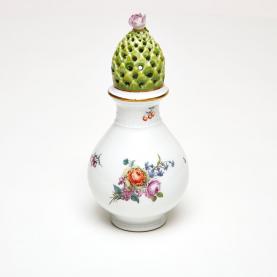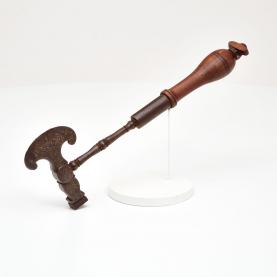The history of sugar
Several substances are now used to sweeten food and drink. For many centuries, people used honey as the sole sweetener. Sugar cane was known in Asia in prehistoric times and was a plant people took with them as they moved around. Rare and expensive in the Middle Ages, sugar became democratised in the 19th century as a result of sugar beet farming and sugar extraction in industrial refineries.
From expensive sugar cane to cheap sugar beet
People have always known honey and, for a long time, it was the only sweetener used. Originally from New Guinea, sugar cane very soon migrated to Southwest Asia and aroused keen interest among the people who discovered it. In the 6th century BCE, the Persians invaded India and marvelled at this ‘reed which gives honey without the need for bees’. In the reign of Alexander the Great in the 4th century BCE, sugar cane reached the Middle East. During Antiquity and the Middle Ages, sugar was a rare and expensive commodity, as with spices such as saffron and nutmeg.
From the late 15th century, shortly after Christopher Columbus’ first voyage to America, sugar cane plantations developed in the West Indies, then South America, particularly in Brazil. Sugar became the top colonial commodity. It was at the root of the ‘triangular trade’, where European shipowners exchanged trinkets for African men, who were then sold as slaves in America. The ships then returned to Europe with products from the colonies, including precious sugar.
In the early 19th century, in response to the English blockade on sugar from the West Indies, Napoleon ordered sugar beet to be grown on French soil. Marggraf, a German chemist, had discovered the sweetening aspect of the beet in 1757. In 1811, the first economically viable sugar beet processing plant was built in France. Sugar became widely consumed in the late 19th century, as a result of the farming of sugar beet.
From plant to sugar loaf and granulated sugar
In the 13th century, the port of Venice was a major processing centre for sugar coming from the Near East. It is therefore no surprise that the first sugar loaf appeared in this city as early as the 15th century. Also called the ‘Venice cone’, the sugar loaf is a conical block of crystallised sugar. It is produced during crystallisation, the final stage of the refining process. This consists of making sugar syrup which is then poured into an upside-down cone where crystals then form. Residual water can escape from the tip.
The process for extracting sugar from sugar cane and sugar beet is essentially the same, except that sugar cane is first crushed whereas sugar beet is sliced. Sugar cane is crushed and pressed in powerful mills. This enables the extraction of the juice containing all the sugar. The sugar in sugar beet is extracted by osmosis in diffusion towers in which hot water is circulated. As it passes through the slices of sugar beet, the water becomes increasingly sweeter. In both cases, a concentrated juice is obtained in which pure sugar crystals form as it cools: this is crystallisation. Whether it comes from sugar beet or sugar cane, table sugar or white sugar is the same product: sucrose.
Refined products
Raw sugar crystals from sugar beet or sugar cane still contain many impurities. The refining process is designed to remove these in order to obtain white sugar. Several products result from the various stages in this operation.
Molasses is the syrupy residue left over after the crystallisation of the sugar from sugar beet or sugar cane. It can be sold for domestic use or transformed into alcohol in the manufacture of rum.
Icing sugar is very finely ground granulated sugar from sugar beet or sugar cane.
Brown sugar is only made from sugar cane.
The first individually wrapped sugar cube was introduced in Paris in 1908. This soon became the norm, following the proliferation of good hygiene measures at the beginning of the 20th century. Nowadays, refineries mainly produce granulated sugar.
ANGINOT, Philippe, 2009. Les 3 Ors Blancs. La fabuleuse aventure du sucre, du sel et de la farine. Villeveyrac : Papillon rouge
Le sucre, 1997. L’Encyclopédie des aliments. Paris : Éditions Fontaine














